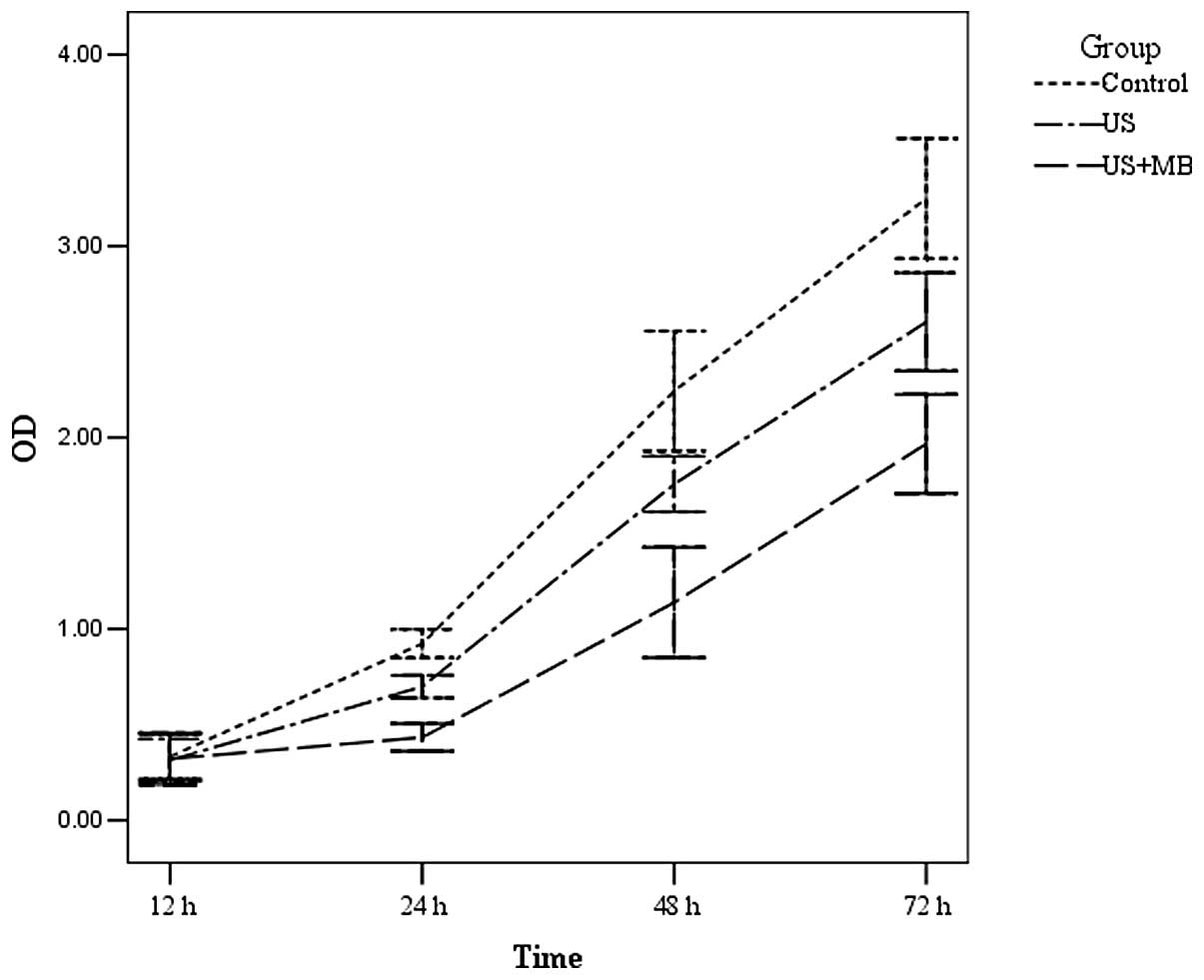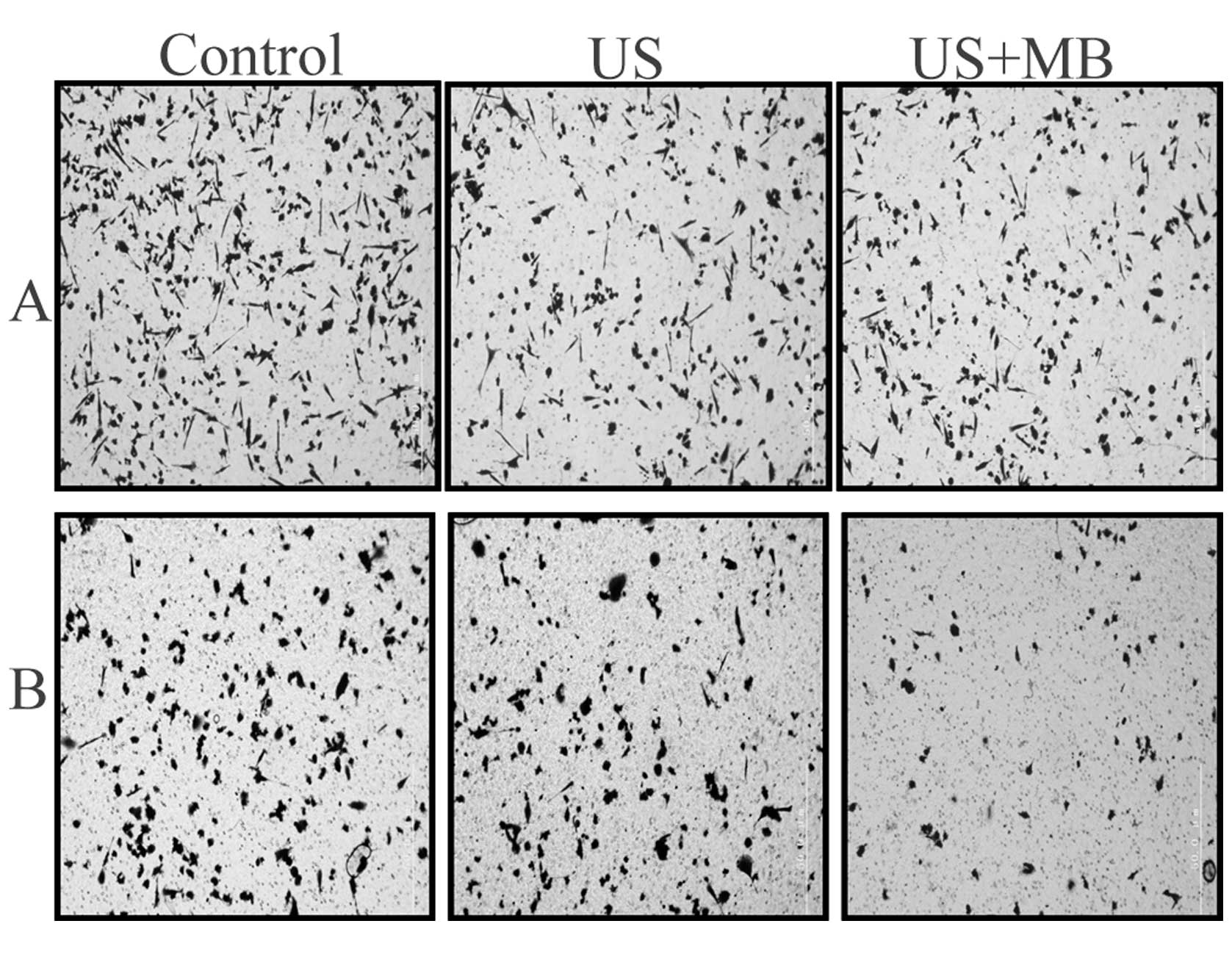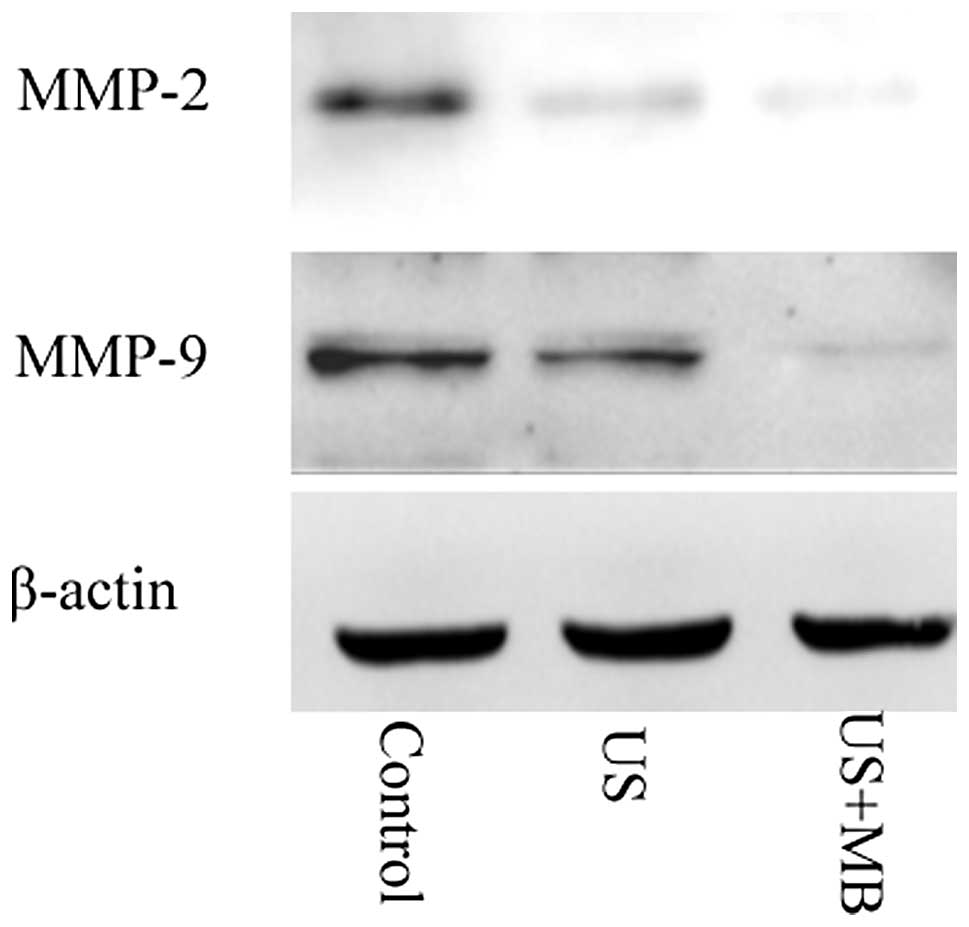|
1
|
Jemal A, Bray F, Center MM, et al: Global
cancer statistics. CA Cancer J Clin. 61:69–90. 2011.
|
|
2
|
McCulloch DR, Harvey M and Herington AC:
The expression of the ADAMs proteases in prostate cancer cell lines
and their regulation by dihydrotestosterone. Mol Cell Endocrinol.
167:11–21. 2000.
|
|
3
|
Saleem M, Adhami VM, Zhong W, et al: A
novel biomarker for staging human prostate adenocarcinoma:
overexpression of matriptase with concomitant loss of its
inhibitor, hepatocyte growth factor activator inhibitor-1. Cancer
Epidemiol Biomarkers Prev. 15:217–227. 2006.
|
|
4
|
Yu W, Wang Y, Gong M, Pei F and Zheng J:
Phosphoprotein associated with glycosphingolipid microdomains 1
inhibits the proliferation and invasion of human prostate cancer
cells in vitro through suppression of Ras activation. Oncol Rep.
28:606–614. 2012.
|
|
5
|
Xiao LJ, Lin P, Lin F, et al: ADAM17
targets MMP-2 and MMP-9 via EGFR-MEK-ERK pathway activation to
promote prostate cancer cell invasion. Int J Oncol. 40:1714–1724.
2012.
|
|
6
|
Tabuchi Y, Takasaki I, Zhao QL, et al:
Genetic networks responsive to low-intensity pulsed ultrasound in
human lymphoma U937 cells. Cancer Lett. 270:286–294. 2008.
|
|
7
|
Tang W, Liu Q, Zhang J, et al: In vitro
activation of mitochondria-caspase signaling pathway in sonodynamic
therapy-induced apoptosis in sarcoma 180 cells. Ultrasonics.
50:567–576. 2010.
|
|
8
|
Feng Y, Tian Z and Wan M: Bioeffects of
low-intensity ultrasound in vitro: apoptosis, protein profile
alteration, and potential molecular mechanism. J Ultrasound Med.
29:963–974. 2010.
|
|
9
|
Ashush H, Rozenszajn LA, Blass M, et al:
Apoptosis induction of human myeloid leukemic cells by ultrasound
exposure. Cancer Res. 60:1014–1020. 2000.
|
|
10
|
Rosenthal I, Sostaric JZ and Riesz P:
Sonodynamic therapy - a review of the synergistic effects of drugs
and ultrasound. Ultrason Sonochem. 11:349–363. 2004.
|
|
11
|
Kolarova H, Tomankova K, Bajgar R, Kolar P
and Kubinek R: Photodynamic and sonodynamic treatment by
phthalocyanine on cancer cell lines. Ultrasound Med Biol.
35:1397–1404. 2009.
|
|
12
|
Liu KC, Huang AC, Wu PP, et al: Gallic
acid suppresses the migration and invasion of PC-3 human prostate
cancer cells via inhibition of matrix metalloproteinase-2 and -9
signaling pathways. Oncol Rep. 26:177–184. 2011.
|
|
13
|
Hwang ES and Park KK: Magnolol suppresses
metastasis via inhibition of invasion, migration, and matrix
metalloproteinase-2/-9 activities in PC-3 human prostate carcinoma
cells. Biosci Biotechnol Biochem. 74:961–967. 2010.
|
|
14
|
Bai WK, Wu ZH, Shen E, Zhang JZ and Hu B:
The improvement of liposome-mediated transfection of pEGFP DNA into
human prostate cancer cells by combining low-frequency and
low-energy ultrasound with microbubbles. Oncol Rep. 27:475–480.
2012.
|
|
15
|
Sicklick JK, Li YX, Jayaraman A, et al:
Dysregulation of the Hedgehog pathway in human
hepatocarcinogenesis. Carcinogenesis. 27:748–757. 2006.
|
|
16
|
Xinzhou H, Ning Y, Ou W, et al: RKIp
inhibits the migration and invasion of human prostate cancer PC-3M
cells through regulation of extracellular matrix. Mol Biol (Mosk).
45:1004–1011. 2011.
|
|
17
|
Livak KJ and Schmittgen TD: Analysis of
relative gene expression data using real-time quantitative PCR and
the 2(−Delta Delta C(T)) Method. Methods. 25:402–408. 2001.
|
|
18
|
Furusawa Y, Zhao QL, Hassan MA, et al:
Ultrasound-induced apoptosis in the presence of Sonazoid and
associated alterations in gene expression levels: a possible
therapeutic application. Cancer Lett. 288:107–115. 2010.
|
|
19
|
Samuel S, Miller DL and Fowlkes JB: The
relationship of acoustic emission and pulse-repetition frequency in
the detection of gas body stability and cell death. Ultrasound Med
Biol. 32:439–447. 2006.
|
|
20
|
Chumakova OV, Liopo AV, Evers BM and
Esenaliev RO: Effect of 5-fluorouracil, Optison and ultrasound on
MCF-7 cell viability. Ultrasound Med Biol. 32:751–758. 2006.
|
|
21
|
Kodama T, Tomita Y, Koshiyama K and
Blomley MJ: Transfection effect of microbubbles on cells in
superposed ultrasound waves and behavior of cavitation bubble.
Ultrasound Med Biol. 32:905–914. 2006.
|
|
22
|
Jackson JK, Pirmoradi FN, Wan CP, et al:
Increased accumulation of paclitaxel and doxorubicin in
proliferating capillary cells and prostate cancer cells following
ultrasound exposure. Ultrasonics. 51:932–939. 2011.
|
|
23
|
Kawai N and Iino M: Molecular damage to
membrane proteins induced by ultrasound. Ultrasound Med Biol.
29:609–614. 2003.
|
|
24
|
Marentis TC, Kusler B, Yaralioglu GG, et
al: Microfluidic sonicator for real-time disruption of eukaryotic
cells and bacterial spores for DNA analysis. Ultrasound Med Biol.
31:1265–1277. 2005.
|
|
25
|
Bai W, Yang S, Shen E, et al: Treatment of
PC-3 cells with ultrasound combined with microbubbles induces
distinct alterations in the expression of Bcl-2 and Bax. Chin Sci
Bull. 58:3535–3540. 2013.
|
|
26
|
Hara T, Miyazaki H, Lee A, Tran CP and
Reiter RE: Androgen receptor and invasion in prostate cancer.
Cancer Res. 68:1128–1135. 2008.
|
|
27
|
Guruvayoorappan C and Kuttan G:
Amentoflavone inhibits experimental tumor metastasis through a
regulatory mechanism involving MMP-2, MMP-9, prolyl hydroxylase,
lysyl oxidase, VEGF, ERK-1, ERK-2, STAT-1, NM23 and cytokines in
lung tissues of C57BL/6 mice. Immunopharmacol Immunotoxicol.
30:711–727. 2008.
|
|
28
|
Roy R, Louis G, Loughlin KR, et al:
Tumor-specific urinary matrix metalloproteinase fingerprinting:
identification of high molecular weight urinary matrix
metalloproteinase species. Clin Cancer Res. 14:6610–6617. 2008.
|
|
29
|
Wang Q, Diao X, Sun J and Chen Z:
Regulation of VEGF, MMP-9 and metastasis by CXCR4 in a prostate
cancer cell line. Cell Biol Int. 35:897–904. 2011.
|
|
30
|
Aalinkeel R, Nair BB, Reynolds JL, et al:
Overexpression of MMP-9 contributes to invasiveness of prostate
cancer cell line LNCaP. Immunol Invest. 40:447–464. 2011.
|

















